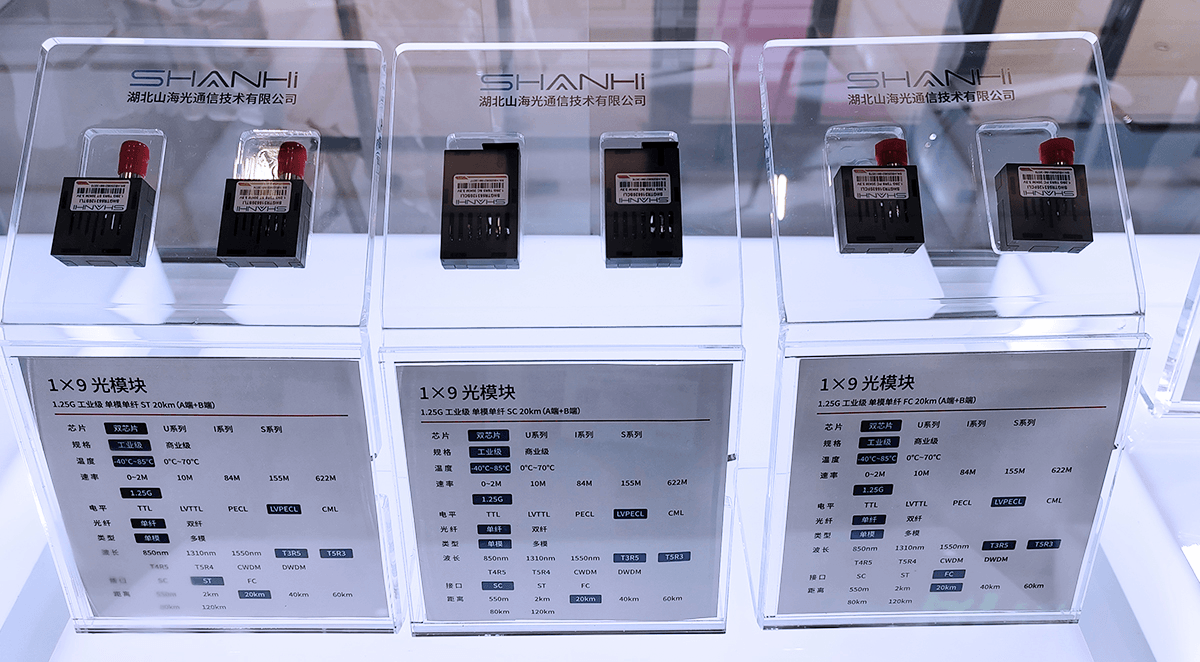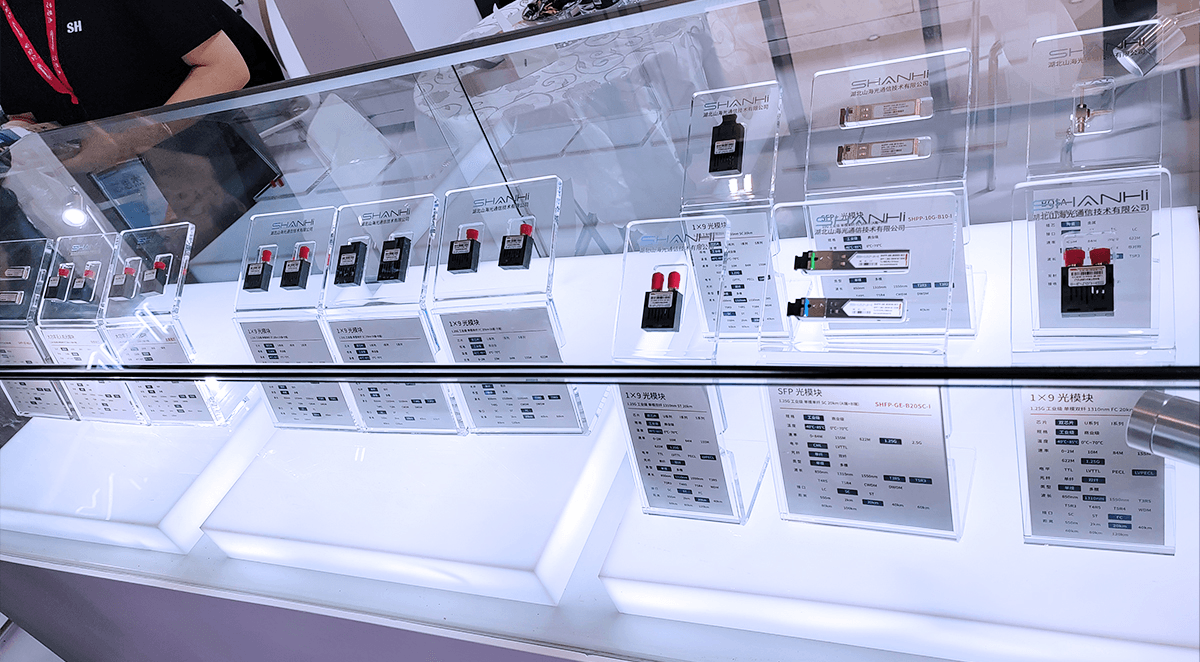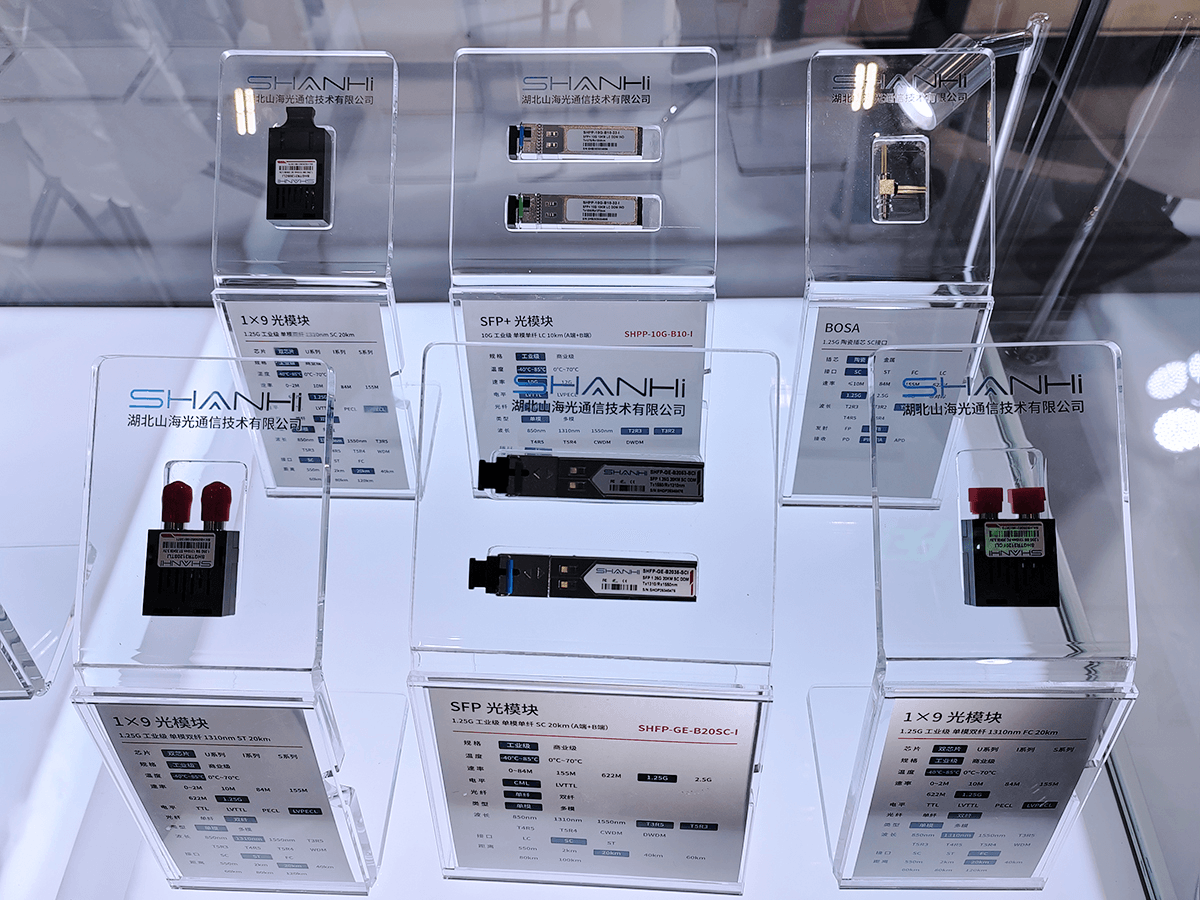As a company dedicated to low-speed optical modules, SH LINK success lies not in blindly following trends, but in focusing on understanding and addressing the actual pain points in low-speed application scenarios, combining technical maturity with scenario adaptability.

The Dual-Chip 1x9 Optical Module
A benchmark product in the low-speed segment, offers comprehensive coverage of data rates including 155Mbps, 622Mbps, and 1.25Gbps. By separating the core functions of the transmitter and receiver into two independent dedicated chips, more complex dispersion compensation and signal equalization capabilities can be achieved. While a single-chip solution integrates both transmission and reception functions, its signal processing is susceptible to interference, whereas the dual-chip design allows for independent optimization of each module. The dual-chip design achieves signal isolation and anti-interference capabilities through physical separation. Furthermore, its modular architecture allows the transmitter and receiver to be upgraded independently, enabling more advanced dispersion compensation and signal equalization functionalities. This approach not only reduces the risk of single-point failure but also allows for individual testing of the transmitter or receiver performance in dual-chip modules, thereby simplifying production debugging.
Industrial Optical Module
Industrial-grade optical modules demonstrate their mature performance through the dual advantages of “ultra-wide temperature tolerance + anti-interference”. Available in both SFP and 1x9 form factors, they operate reliably within a -40°C to 85°C range, supported by customized temperature compensation algorithms and validated through 48 hour high-low temperature aging tests
Furthermore, these modules are certified with EMC Class A, enabling them to withstand strong electromagnetic interference from sources such as inverters and motors in industrial environments. They ensure uninterrupted communication in extreme scenarios, from data acquisition in freezing mining areas to equipment interconnection in high-temperature steel mill workshops, Currently, SHL LINK provides long-term supply services to over 20 heavy industrial enterprises in China.
The TTL-level Optical Module
The TTL-level optical module is a type of fiber communication component that integrates a TTL digital signal interface, specifically designed for low-speed and high-reliability applications. It is available in two form factors:TTL-level 1x9 and TTL-level SFP optical modules. It features low latency, high stability, strong anti-interference capability, and broad level compatibility.
TTL circuits feature extremely short transmission delay times(typically at the nanosecond level), and their optical signal transmission is immune to electromagnetic interference, making them well-suited for industrial control scenarios with high real-time requirements.
For example, in communication between PLCs(Programmable Logic Controllers) and sensors, these modules ensure data transmission within microseconds, preventing equipment malfunctions caused by delays. Optical fiber transmission inherently provides electromagnetic interference industrial environments(e.g., from inverters and motors). Test data show that even in 10KV high-voltage environments, these modules maintain a bit error rate below 10-9, far surpassing the anti-interference capability of traditional copper cables.
And it supports both TTL and CMOS level standards, enabling direct interfacing with the I/O ports of mainstream embedded chips without requiring additional level conversion circuits. For example, in smart home systems, the modules can seamlessly connect microcontrollers with various sensors, simplifying the hardware design process. They are widely used in industrial automation and control , relay protection and smart grids,power inspection and equipment monitoring, security and surveillance systems, testing and scientific research equipment, as well as IoT and edge computing.
The High-Power 1x9 Optical Module for Drones
The high-power 1x9 optical module for drones is a high-speed fiber-optic communication component specifically designed for industrial UAVs. Combining the compact 1x9 form factor with optical fiber transmission technology, it delivers significant advantages in anti-interference capability, long-distance reach, and low latency
The FC metal interface offers 3 times greater vibration resistance than the LC interface of SFP modules, with an axial pull tolerance exceeding 50N, making it ideally suited for the intense vibration environments encountered during drone flight.
With a data rate of 1.25Gbps, it enables real-time transmission of 4K/8K ultra-high-definition video. Coupled with the low-latency characteristics of optical fiber (≤5 ms), the module ensures instant data interaction between drones and ground stations. It is suitable for a wide range of applications, including power insoection, emergency rescue, deep-sea exploration, and military operations.

The 1x9 Optical Module ,Certified with EMC CLASS A
The 1x9 optical module, certified with EMC CLASS A, serves as a reliable communication core in complex electromagnetic environments, leveraging its industrial-grade EMC design and standardized performance advantages. This certification complies with international standards such as EN55022 and FCC Part 15, achieving radiation emission control of ≤54dBμV/m across the 30MHz-1GHz frequency band, this design balances permissible electromagnetic emissions in industrial environments with robust immunity to common-mode interference. Through metal-welded hermetic sealing and optimized wave-absorbing materials --such as patented annular baffles and metal spring shield structures--it establishes strong anti-interference capabilities effectively resisting intense noise from factory motors, frequency converters and other high-interference sources. Featuring a fully welded packing design compatible with FC/ST/SC interfaces, along with axial pull tolerance > 50N and impact resistance up to 50G, it maintains stable transmission across a wide temperature range of -40℃ to +85℃. For instance, in automotive production line scenarios, the bit error rate can be reduced from 10-9 to 10-12
Additionally, this certification ensures compliance with multinational access requirements for industrial and commercial applications, preventing system interruptions caused by electromagnetic interference.
The ST Interface SFP Optical Module
The ST interface SFP optical module combines the dual advantages of the ST connector and SFP packaging. Its bayonet-style locking mechanism ensures a secure fiber connection, effectively resisting vibrations, shocks, and other harsh environmental disturbances, This design prevents signal interruptions caused by loose connections, making it particularly suitable for applications with stringent stability requirements, such as industrial control a outdoor communication. Furthermore, it inherits the “small form- plug and play” spec of SFP modules, supporting hot-swappable operation -- allowing quick replacement of update without interrupting the entire system, significantly reducing maintenance downtime. Its compact packaging design also saves equipment port space, thereby increasing overall port density; It also delivers excellent compatibility and flexibility, supporting multiple data rates such as 100Mbps and 1Gbps, and covering a broad wavelength range including 850nm (mult-mode) and 1310nm/1550nm (single-mode). This enables adaptation to fiber links ranging from hundred-meter short-distance to kilometer-scale long-distane transmissions.
Moreover, its standardize design ensures compatibility with most major equipment manufacturers’ interfaces, reducing device selection and replacement costs. And compared to fixed optical port modules, its on-demand replace-ability helps reduce upfront procurement costs and prevents resource waste caused by rate/wavelength mismatches. Overall, it delivers an efficient, reliable, and cost-effective optical transmission solution for telecommunications, data centers, industrial communications, and other fields

